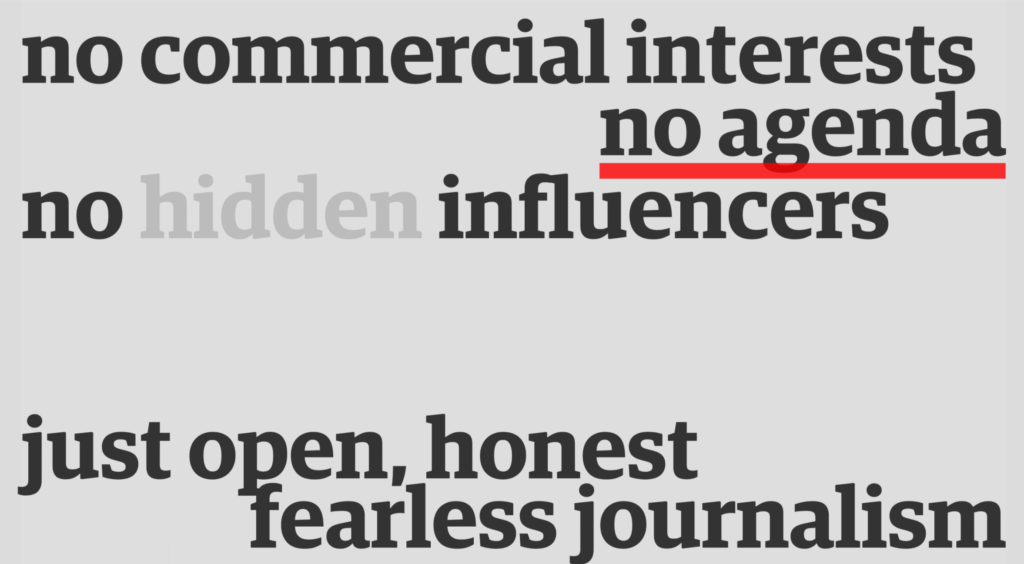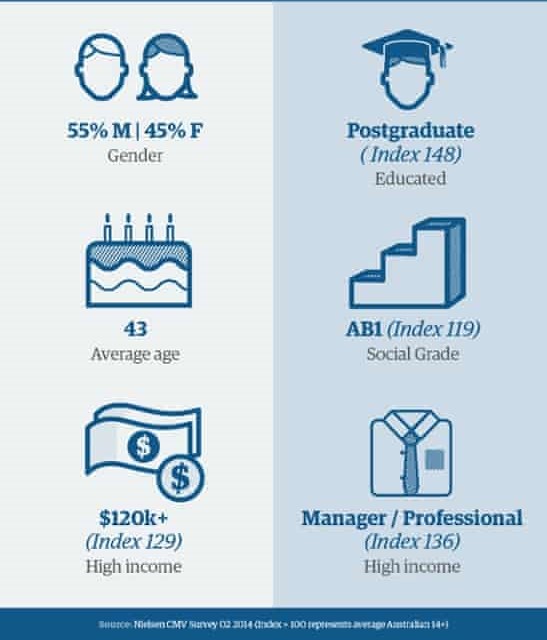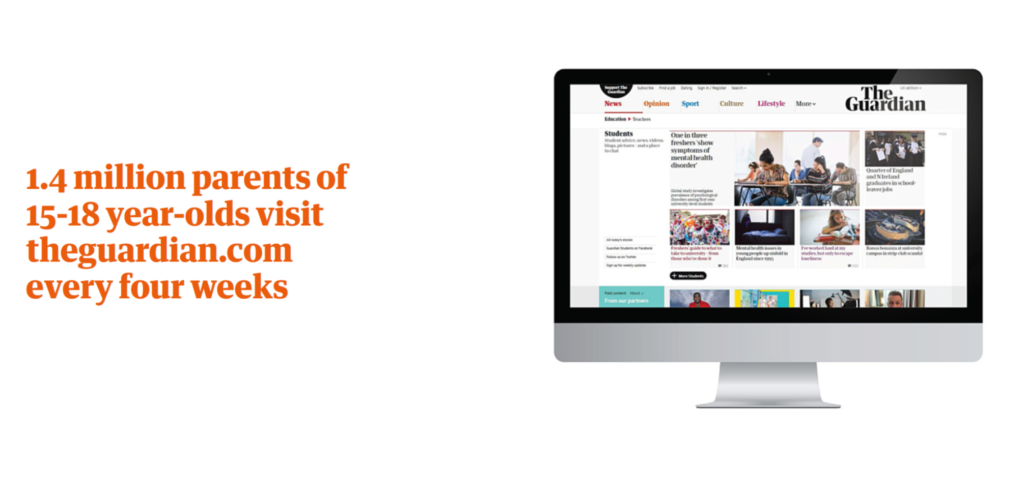
This article will analyze two news from the established online news service, the Guardian (news), and the participatory news service, Buzzfeed (news) about the March 15 Australia students strike for climate change from the perspectives of publishing contents, target audience group and Journalistic contents.
The Guardian
publishing context
As a daily newspaper belongs to the Guardian Media Group, the Guardian was founded in 1821, acquired the Observer as its sister paper in 1993. With fast growth and development in Journalism, they launched the electronic publication service and had its international websites in UK, US and Australia edition (ABCNews, 2013). It also said to be the quality newsbrands and most trusted newspaper in Britain. (Waterson, 2018)
The Guardian has always professed themselves report news with tenacity and rigor, with no commercial bias and not influenced by any political or religious organizations (“The Guardian: independence matters”, 2016).

User Group
At the end of 2012, the Guardian had a certified daily circulation of 204,222, Its monthly readers are reaching more than 23 million and 4.1 million readers a day on average across its platforms(Waterson, 2018).
According to audience groups around the world of the guardian, 55% of them are male and 45% are female. These people, with an average age of 43, are affluent and educated.

During the youth group, the Guardian also has a highly reputation. Its figure shows that 54% of 16-19 year-olds in UK have a reading experience in either print or online edition, and the number of this group is 1,671,000. Not only students, 1.4 million parents of 15- to 18-year-olds visit the site every month. (the Guardian, 2019)

Journalism writing
This news tells where, when and why the Climate Strike movement in Australia will hold, and lists the explicit details about the strike. From Sydney to Adelaide, the guide Those details are a great guide for people who want to get involved in the climate strike. As an activity with strong individual color, it requires a posture of objectivity and better have no personal comments, observations or summary. Otherwise, the student strike movement will have editor’s emotional elements and ideology.
However, the Guardian has handled this issue well, holding a delicate balance between facts and texts, and elaborating the process and details of the event from the perspective of the third person. An established online news service shows that what the journalists have reported should be practical and realistic, so it can greatly enhance the credibility of the media.
Online Delivery
The news itself is dominated by pictures and words, and the article begins with the link about some background information of the school climate strike, this hyperlink can make audiences who are not familiar with this movement have a clear cognition after reading the article of links.
After that, this article gives a lot of strike movement information from different parts in Australia (from north Australia to South Australia, including Western Australia and other regions). It is a coincidence with the Article’s subheading “60 locations” and not exaggerating the contents of the article. It provides the source data from another platform to make sure the source creditability and also improves the accuracy of its content.
And embedded materials such as Tweet, Facebook or YouTube videos are rarely used by the editor to use which make the news not much attractive. Besides the hyperlinks and diagrams from the article, the audience may not find other interactive reading experience. As Bradshaw said, if they add some “embedded media such as video and audio players and social media updates” to tell the information from different platforms, the audience can have a better reading impression.
Technical Delivery
The logic of this news report is very clear, and each subtitle corresponds to the corresponding content. From the perspective of web interface layout, expanding and bolding subheadings allow readers to confirm the article’s effective contents when they navigate the information on the web page.
When it comes to the students, the subject of school strike, they add additional content recommendations like quote other’s words to the text interface to make the layout pleasing and valuable. When set labels for the news, the Guardian also use the correct and clear tags for readers to find. After all, the Guardian has been praised by the industry for providing reliable information to readers.

The Buzzfeed News
publishing context and user group
As an “independent digital media company,” Buzzfeed is headquartered in New York, established in 2006. In just over a decade, it has grown into a global media and technology company with extensive operations and more than 1700 employees in more than a dozen bureaus around the world. (Meyer, 2015)
Although Buzzfeed, a digital-born service website, has grown significantly, It has been at the top of the industry in producing popular contents and topics. In the journalism industry, Buzzfeed also faced blame and criticism such as plagiarizing other online and offline platforms’ contents, unreliable sources, unpaid contributors and so on.
According to the data analysis website, similarWeb, the total visits for Buzzfeed is about 88.52 for a day on average. The data shows that 43.66% audience, that is, nearly half of the people, comes from the United States, followed by the United Kingdom, Brazil, and Japan.

Journalism writing
The article titled Australian School Students Have Gone On Strike For Climate Change is published in Buzzfeed.News, it introduces the process of Climate Strike Movement of Australia.
The feature of this news is that it substitutes a large number of images for texts, thus presenting the school strike progress in Australia with concise pictures and texts. This faster and more natural way of reading is in line with the reading habits of some Internet users because the vivid and intuitive pictures can save readers the steps of transferring words into images in their minds, stimulate their interest in reading, and save their reading time.
As climate strike relates to sensitive topics such as environmental protection and political issue, the authors avoid using language with their subjective consciousness in the whole article but conceiving the structure of the contents by interviewing a variety of demonstrators. Combined with different embedded materials to show their readers the information as comprehensive as possible
Online Delivery
This article has the advantage that the authors embedded different materials like tweets and videos, in this case, they can divide serious environmental movement into vivid images and videos, and recombined these messages into clear and unambiguous information.
However, there are some problems in the article, such as the brevity problem and lack of background information to audience.

Although climate change becomes a global and popular issue, there is a reason for why students in Australia went on strike. And it does not introduce the background knowledge to the readers. There may be readers from other countries who are not familiar with this matter and cannot fully understand the content. My suggestion is that adding the information of the Swedish student Greta Thunberg held the strike 4 climate action or some other links about the background information.

Also, at the end of the article, when editors give brief information about climate strike from other parts of Australia, there is no link. As Bradshaw says in his article, the author should “deeplink wherever possible,” if there are more links to Adelaide and Brisbane, it would be better.
Technical Delivery
Although this article uses various embedded tools to capture readers’ interests and try to break up text with other embedded media to make the website legible. Its use of typography, the arrangement of the page and even image needs modification.
For example, this news has 18 images and videos to express students’ movement behavior, but a variety of images sizes made the audience hard to browse the web. Sometimes, some pictures even need to drag the mouse on the screen so that readers can see the full image. Besides, the staggered arrangement of videos and tweets will reduce audiences’ reading experience. My advice is that they should have the standards for image sizes to fit the web layout, they can cut the vertical version of the pictures appropriately, or modify the text alignment and achieve brevity in multimedia.
Conclusion
No matter the established online news service or the participatory news service, what they would like to do is to is bring fresh and comprehensive information, create a good conversation atmosphere with readers and promote their consume contents online proactively. At this point, modern readers should appreciate the media industry for their efforts.
Word count: 1426
References
ABCnews. (2013). Guardian to launch Australian online edition. Retrieved from https://www.abc.net.au/news/2013-01-16/guardian-launching-australian-online-edition/4466636
Bradshaw, P. (2018). Writing for the Web. In The Online Journalism Handbook: Skills to survive and thrive in the digital age (pp. 72–98). Routledge.
Meyer, A. (2015). The Eternal Return of BuzzFeed. Retrieved from https://www.theatlantic.com/technology/archive/2015/04/the-eternal-return-of-buzzfeed/390270/
The Guardian: independence matters. (2016). Retrieved from https://www.theguardian.com/info/2016/apr/27/the-guardian-australia-independence-matters
The Guardian. (2019). Audience | Guardian Courses. Retrieved from https://advertising.theguardian.com/youth/audience
Waterson, J. (2018). Guardian most trusted newspaper in Britain, says industry report. Retrieved from https://www.theguardian.com/media/2018/dec/17/guardian-most-trusted-newspaper-in-britain-says-industry-report





Be the first to comment